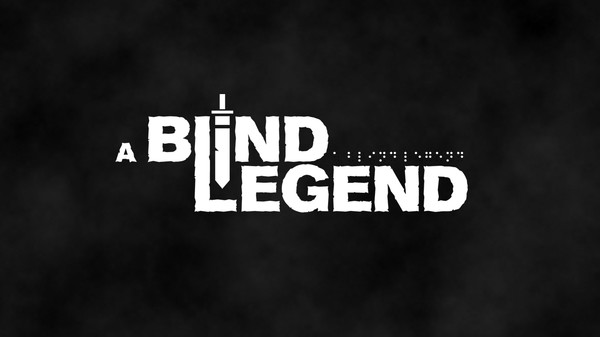
My sixth grade teacher once asked the classroom which we would prefer: to lose our eyesight or to lose our hearing.
While most of the classroom chose to lose their hearing, I decided I could live without my sight. My teacher argued against my choice, insisting that it would be harder to live a “normal” life – driving, watching TV, and other activities that I relied on my eyesight for would be difficult – if not impossible, to do. Nevertheless, in my steadfast ignorance (based on nothing, really), I clung to my hearing adamantly, certain that I would need it more than my eyesight. I couldn’t imagine a life without my favorite music, the soothing purr of my cat, or my mother’s kind voice. Besides, I didn’t rely on my eyesight that heavily, right? It’s something I could live without for sure…right?
A Blind Legend taught me just how obliviously privileged I am to be blessed with the gift of sight and showed me just how much I rely on my eyes when it comes to interpreting the world around me.
To say A Blind Legend is unique is a gross understatement – a title touted as the first real video game for the blind? How could this be, when the root of the word “video” is the Latin word vidēre, meaning “to see”? Dowino and France Culture took this challenge head on and showed my sight-privileged self that video games are not constrained to primarily utilizing vision.
It all begins with a dim haze and a woman’s voice (who sounds almost like a warped version of Siri) reading the on-screen logos and advising you to plug in your headphones. This will be the only text you’ll see; as it soon vanishes and you are left with nothing but fog for your viewing pleasure. There is no on-screen main menu – rather, the narrator will read it to you and detail the instructions verbally.
The game opens up with a quick tutorial to get the player acquainted with the mechanics – you play as Sir Edward Blake, a blind knight, who relies on his daughter Louise to tell him where to go. Louise will direct you with commands like “straight ahead”, “this way”, and “behind you”. The sound of her voice moves from one ear to the other depending on where she is in relation to you – if she runs from left to right, you will hear the sound move from the left to the right in your headphones. As you move, you can hit spacebar to have her call out to you again so you can re-orient yourself in relation to her. Usually I breeze through tutorials, but this one took a lot of effort to complete. I was surprised by my inability to place where she was and really struggled for a good five minutes before I learned the ropes.
The story is intriguing – not just because of how it was written verbally but how it played out audibly. The first 10 seconds feature various background noises that would be found in a medieval marketplace – wooden wheels grinding against stony roads, the chatter of the people running errands, and the overall hustle and bustle of 11th century life. These sound effects may seem insignificant, but without any accompanying video they were critical – I would have no other cues to give me an idea on where I am without them. This audio painted a very different picture depending on where I was – outside the city walls, for example, I heard rain with loud, booming thunderstorms. Twigs would snap underneath my feet as I stumbled through the woods. Upon entering a cave, bats would fly out. Where there were no visual cues to tell me where I was, the audio cues enabled me to discern the environment.
Combat is as expected (and desired):
Sir Blake’s lack of sight means his other senses have become more heightened to make up for the loss. Holding down the “f” key will continuously block, and it is advised to use this to learn your enemy’s pattern of attack and find the weakness. For example, I fought what I imagined to be a bear. I blocked until I figured out that I had to swing my sword precisely one split second after the animal released a growl in order to slay the foul beast. Different enemies will have different fighting strategies, though, so it’s best to approach all of them in this way before attacking.
There was one part that really got to me: I was fleeing from pursuers on horseback - Louise shouted to hide behind a clearly audible waterfall, but I couldn’t figure out where it was. I was desperately running around, trying to find her voice and get nearer to her. As time ticked on, I could hear the riders approaching, getting closer and closer with each passing second. Suddenly, I heard them on top of me, striking me with their swords. I yelled out in pain as I fell lifeless to the ground, my daughter’s terror-stricken screams being the last thing I heard before death’s cold embrace.
I think why this resonated with me as much as it did was because I panicked. I knew they would be closing in on me and I had to find this freaking waterfall and it just wasn’t working. I could feel my heart rate increasing while I did my best to listen to sounds – my eyes completely useless – to figure out where this waterfall was. The impending doom coupled with this challenge really had me invested in a way I didn’t think was possible without video.
I appreciate A Blind Legend for what it is for my demographic (a learning experience to show us how the visually impaired might view the world) but as a game it was slightly frustrating. The footsteps were sometimes too hard to hear – I often would be holding down the “up” button just hoping I was walking. The footsteps also didn’t seem to vary too much – I was reaching for any cue I could get, and the footsteps not clearly changing terrains was one that didn’t seem to be there. The most annoying part, however, was walking into an obstacle without really knowing it. I assume in life, the visually impaired that are lucky enough to have a companion like Louise would have trained her to say something when there’s a rock in the way. I would have also thought that maybe I might grunt or make a noise should I run into a wall. I discovered I had spent an awful lot of time slowly walking into…something. Who knows what those obstacles were, but I struggled to get around them. It would have been nice to have a cue that tells me I’ve hit a wall, but I suppose the struggle enabled me to feel even more empathetic towards the visually impaired.
The Verdict
Despite there not being any visuals attached to this title, I would consider this a piece of art. The rich environments and engaging gameplay sucked me in and taught me how to view life from a different perspective. I found myself closing my eyes and cocking my head towards the left or the right, depending on which ear the headphones were focusing on, as it seemed to be more helpful than staring blankly at the screen. As a game I found it to be a bit aggravating, but I wonder if that has more to do with the loss of my sight rather than the title itself. I thoroughly enjoyed this experience and learned that, quite frankly, I’m privileged to have my sight and feel more grateful for it due to A Blind Legend.


